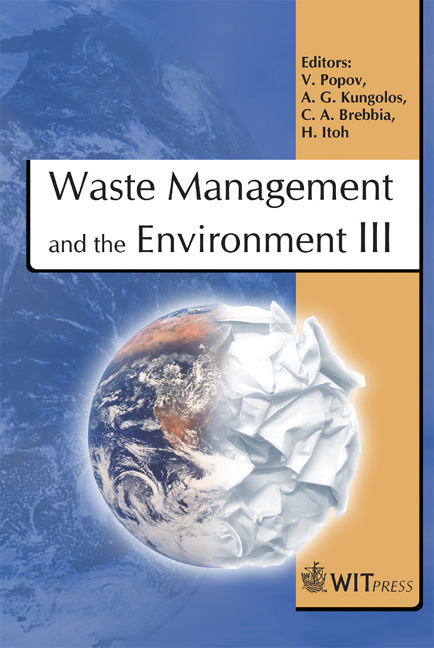No Waste By 2010: Leading The Way
Price
Free (open access)
Transaction
Volume
92
Pages
16
Published
2006
Size
533 kb
Paper DOI
10.2495/WM060541
Copyright
WIT Press
Author(s)
C. Horsey
Abstract
The Government of the Australian Capital Territory (ACT) was the first in the world to establish a No Waste by 2010 Goal in 1996 and has since established itself as an international leader in sustainable waste management practices. The No Waste Strategy is the result of extensive community consultation, which identified a strong community desire to achieve a waste-free society by 2010. Since its inception, the No Waste goal has had strong government and community backing and support that has resulted in significant changes in the way waste is viewed and handled in our community. Implementation of the No Waste Strategy has already achieved a resource recovery rate of over 73%, with some 550,000 tonnes of resources being recovered and processed out of the 770,000 tonnes of waste generated in the Territory annually. This 73% resource recovery rate has been achieved despite a steady increase in total waste generation that is linked to increasing consumption patterns of an affluent western society. The No Waste Strategy is based on the implementation of an Integrated Resource Recovery Approach that incorporates: the use of economic mechanisms; provision of appropriate infrastructure and services; strategic partnerships and alliances; the development of a resource recovery industry within the ACT; market development for products derived from wastes; strong community engagement programs; and recognition mechanisms for No Waste leaders in our community. Importantly, legislation and regulation mechanisms have not been utilised at this stage to drive resource recovery outcomes. The model is based on four distinct corner stones: The recovery of standard recyclable materials from both the residential and business sectors; The recovery and processing of mixed building and demolition wastes and mixed commercial and industrial wastes; The recovery, separation and processing of organic materials, with separate processes for garden and food wastes; and Then dealing with the more complex composite residual waste products that make up about 5% of our waste stream. The paper outlines the Integrated Resource Recovery Model and the approaches that have been adopted for the ACT context; model rationale and details on mechanisms utilised; a progress report; successes and challenges and our future directions. Keywords: Australian Capital Territory; No Waste; sustainable waste management; Integrated Resource Recovery Approach; resource recovery industry; waste minimisation strategy.
Keywords
Australian Capital Territory; No Waste; sustainable waste management; Integrated Resource Recovery Approach; resource recovery industry; waste minimisation strategy.





